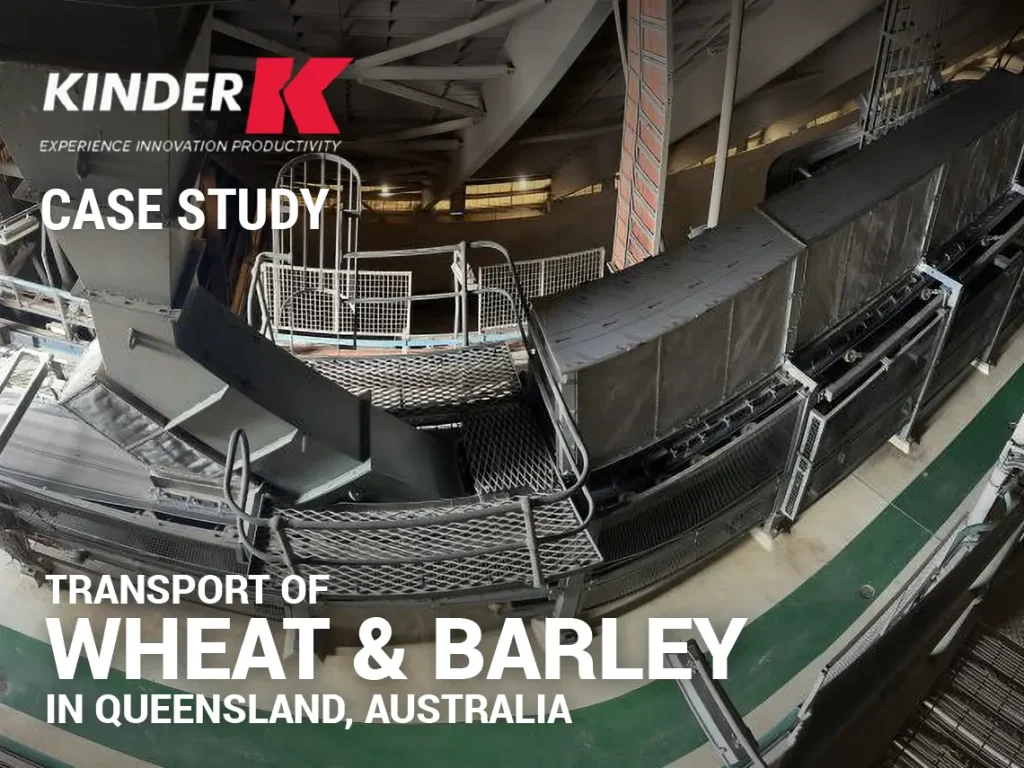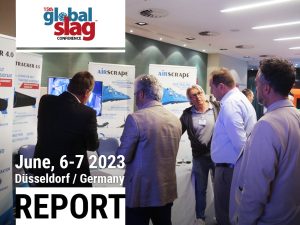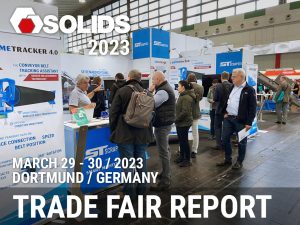Download PDF » Watch Installation Video »
Simply Switched Off
Excessive Dust And Spillage
Our customer is one of Australia’s most progressive commodity terminals. The operator’s core business encompasses bulk storage and handling facilities for primarily wheat and barley.
CHALLANGE:
- Excessive dust and spillage at the transfer chute.
- Slippage and other OHS hazards linked to dust/spillage issues.
- Anti-static/FRAS requirements.
The facility currently accommodates over 85,000 metric tons of bulk grain storage, receiving stations and ship loading export services from its Queensland base.
Due to high material drop at the transfer chute an excessive amount of dust and spillage was observed. Faced with the ongoing dust and spillage predicament, the Maintenance Supervisor specifically sought a low maintenance, long lasting solution to suppress and minimise the excess dust/spillage at the facilities outdated tail end transfer chutes.
To elaborate, the 10-metre material drop created a high material flow pressure at the end of the chute at the drop zone of the receiving conveyor. Excessive dust was shooting out at the front of the old, enclosed tunnel, like out of a “barrel of a gun”. Additionally, due to the presence of wheat and barley dust and the associated fire/explosion risk, it was a requirement for all conveyor components to be anti-static and FRAS-approved.
The operator previously relied on double sealing skirtings which were worn through, the chute set up was also outdated and well due for an overhaul.
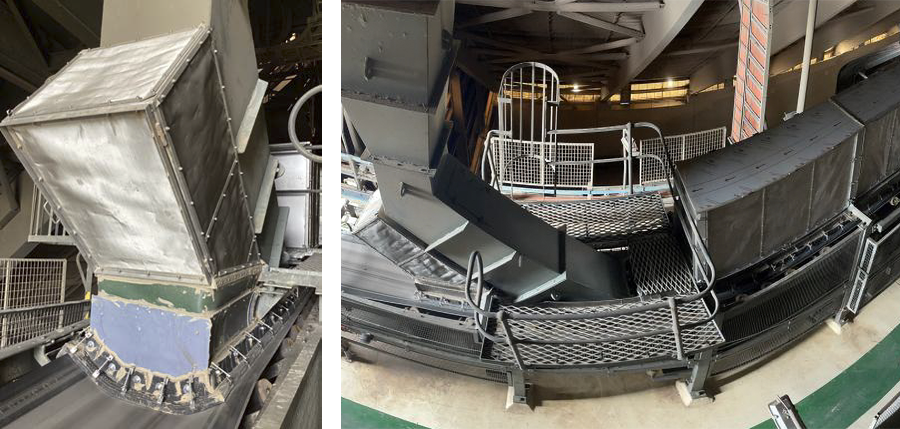
After Photos: Kinder’s FRAS AirScrape®/TailScrape/K-Containment® Seal skirting solution successfully contained the excess dust and spillage is now down to zero.
SOLUTION:
Between January and April 2023, the installation process began, this entailed modifications to the drop zone to divert the grain/barley to be more centrally loaded. The site skirting was also modified to accommodate Kinder’s FRAS AirScrape® (10m), FRAS TailScrape (1m), and FRAS K-Containment® Seal (6m) and extension of the existing chute tunnel and custom made Dustboxes. Behind the drop chute, the Tailbox was extended by 1-metre. Stainless steel filter cloth was also installed onto the Tail Dustbox.
With the reduction in air pressure, dust and/or material was no longer able to escape from the Tail box. Excessive air pressure gets released through the filter cloth, the dust stays inside the box and drops back into the material flow.
In front of the chute tunnel, a 6-metre long, 1.2-metre high and 0.6-metre-wide a custom-made Dustbox with stainless steel filter cloth was also installed. The filter cloth is vertical, left and right side of the Dustboxes, nothing on the top, the end and the front of the Dustbox. Inside the Dustboxes, 5 dust barriers and curtains were installed to further calm down and suppress the excessive dust clouds. Similar to the Tailbox, the excessive air pressure gets released through the vertical stainless steel filter clothes, dust is successfully contained inside the Dustbox and drops back into the material stream.
AirScrape® and TailScrape, highly effective contactless skirting solution makes no contact with the belt surface with its unique diagonal arrangement of hardened lamellas, air is led from the outside into the middle of the belt, creating a powerful suction effect enabling fine dust particles to remain in the conveyor section.
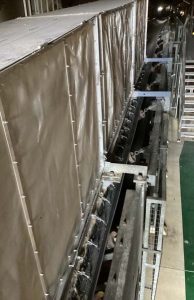
FRAS conveyor skirting and dustbox combination eliminates dust/spillage plus the fire/explosion risks at the transfer chute load zone is greatly minimised.
RESULTS:
- Dust issues under control, spillage down to zero.
- Improved visibility during the intake.
- External extraction system is not required.
- OHS hazards successfully addressed.
The results of the installation have been highly successful in resolving the dust and spillage challenges. The reduction of excessive dust and spillage has had a significant positive impact on health and safety, particularly on the walkways.
The risk associated with wheat and barley spillage on the floor has been minimised, reducing it to zero. Furthermore, visibility during the intake process has drastically improved. An external extraction system is not necessary, providing cost savings and simplifying maintenance.
The Maintenance Supervisor at the facility has confirmed the positive outcome of the installation, expressing satisfaction with the solution provided by Kinder/Conbulks. With a life expectancy of up to 20 years without wearing out, the dust and spillage control solution offers long-term reliability and effectiveness. There are also plans on implementing a similar solution in other areas of their facility in the future.
